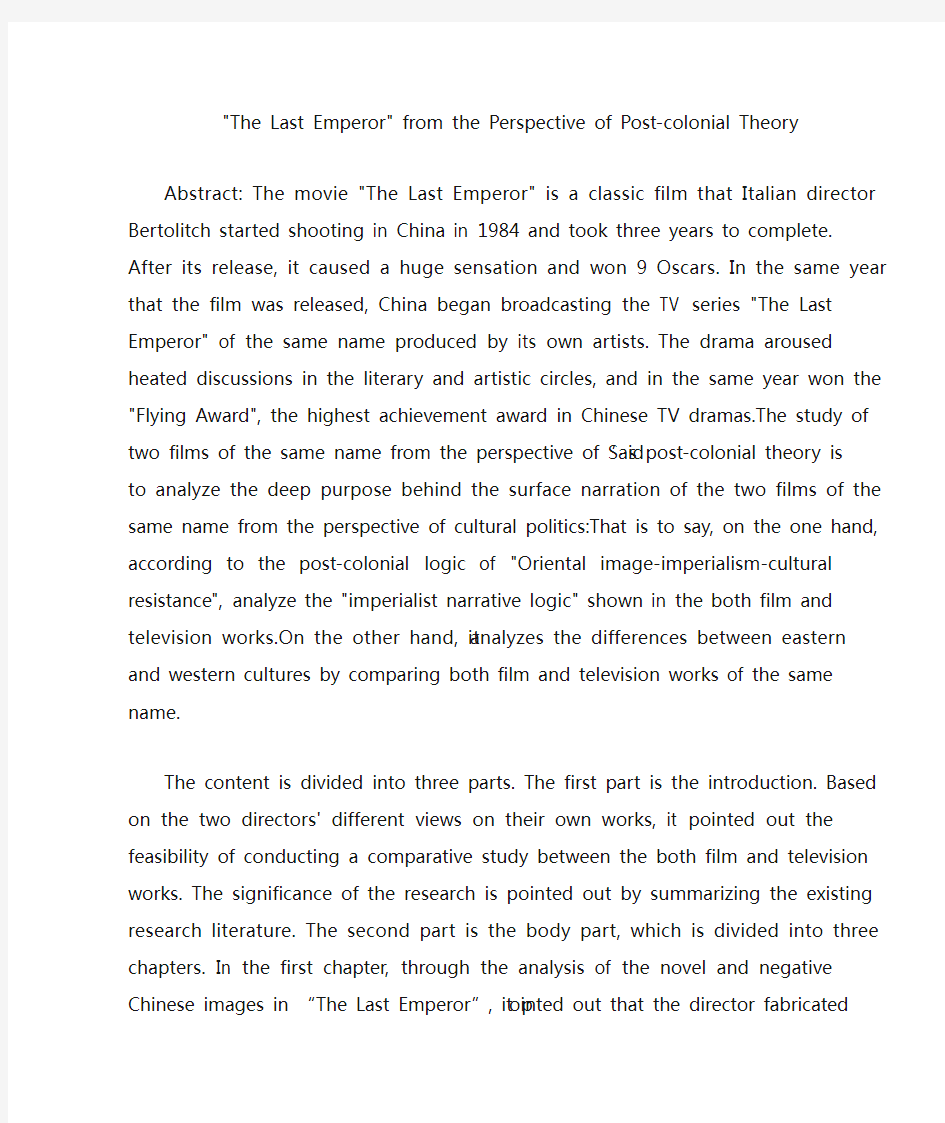
末代皇帝 英文观后感
- 格式:docx
- 大小:14.28 KB
- 文档页数:2


"The Last Emperor" from the Perspective of Post-colonial Theory
Abstract: The movie "The Last Emperor" is a classic film that Italian director Bertolitch started shooting in China in 1984 and took three years to complete. After its release, it caused a huge sensation and won 9 Oscars. In the same year that the film was released, China began broadcasting the TV series "The Last Emperor" of the same name produced by its own artists. The drama aroused heated discussions in the literary and artistic circles, and in the same year won the "Flying Award", the highest achievement award in Chinese TV dramas.The study of two films of the same name from the perspective of Said’s post-colonial theory is to analyze the deep purpose behind the surface narration of the two films of the same name from the perspective of cultural politics:That is to say, on the one hand, according to the post-colonial logic of "Oriental image-imperialism-cultural resistance", analyze the "imperialist narrative logic" shown in the both film and television works.On the other hand, it analyzes the differences between eastern and western cultures by comparing both film and television works of the same name.
The content is divided into three parts. The first part is the introduction. Based on the two directors' different views on their own works, it pointed out the feasibility of conducting a comparative study between the both film and television works. The significance of the research is pointed out by summarizing the existing research literature. The second part is the body part, which is divided into three chapters. In the first chapter, through the analysis of the novel and negative Chinese images in “The Last Emperor”, it pointed out that the director fabricated the Chinese images with novel and prejudiced eyes. In the body part, the second chapter is on the basis of the first chapter, which pointed out that the fiction of the eastern image is in order to lay the foundation to establish the gain of imperialism and colonial interests , and through the comparison of the relationship development between the British Johnston, the Japanese Mr Amakasu and Pu Yi in the film to show the different ways of establishing two imperialist rule and the different means of obtaining benefits; Chapter three analyzes the differences between eastern and western cultures and the cultural resistance of TV drama to the film against imperialist narratives through different
writings of the same event in the movie "The Last Emperor". The third part is the conclusion. After summarizing the whole text, it pointed out that not only the film “the Last Emperor” shows the "Orientalism" which lacks understanding of Chinese culture, the TV series "The Last Emperor" also shows accusing the west of "Westernism". Although both film and TV drama failed to understand each other's cultural system, they showed their own nations’ unique cultural background in the process of telling stories. The film “The Last Emperor” reflects the western culture's tradition of paying attention to individuals, taking history as the background and telling the life course of "individuals". "The Last Emperor," on the other hand, reflected China's tradition of focusing on society and history, using "the individual" as a backdrop to reflect the direction of history in an attempt to reach a political height.